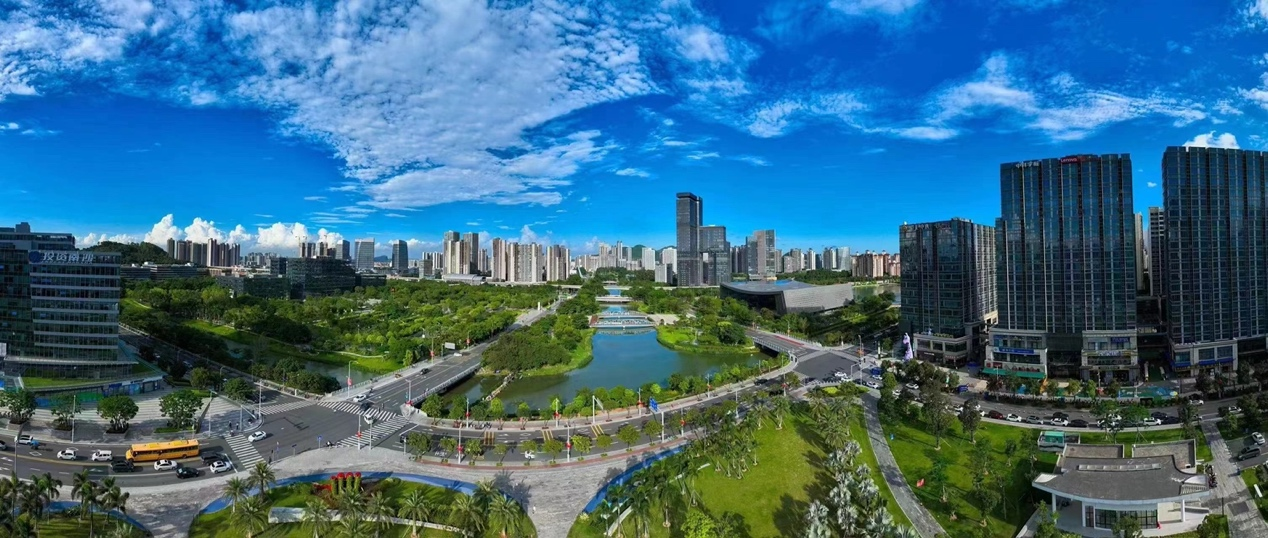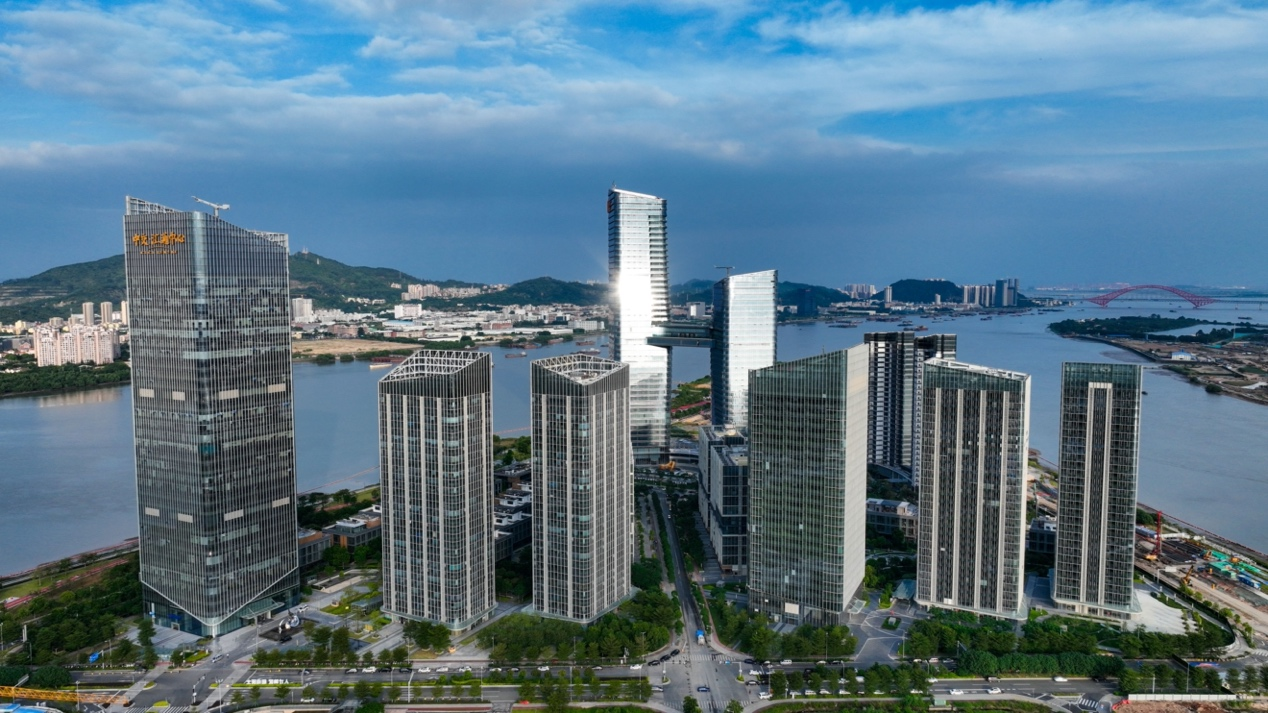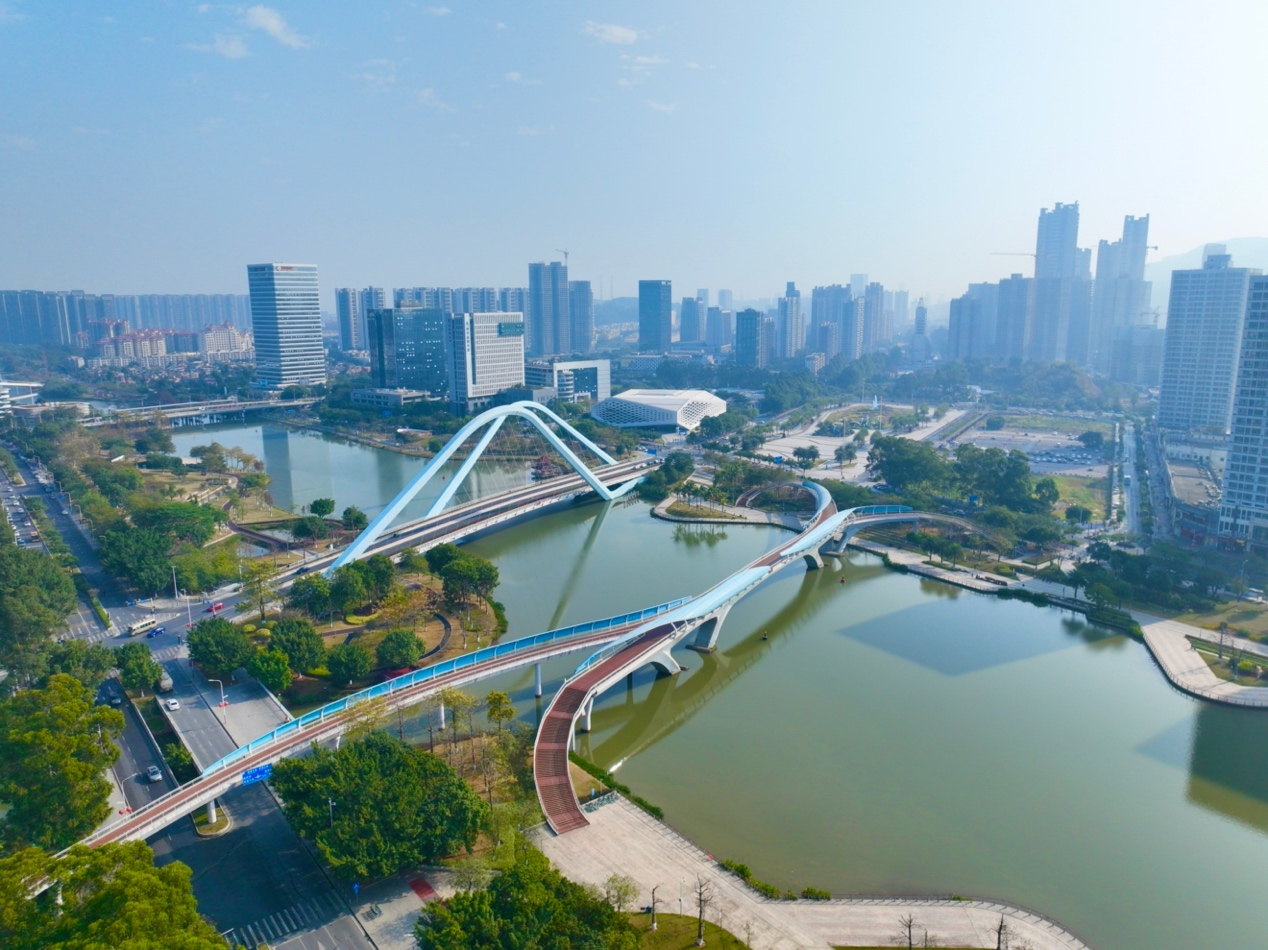Editor's Note: This is an op-ed by Yiqing Wang and Shiqiang Liu, reporters of Nanfang Daily.
China will promote the high-quality development of state-level new areas, making them new highlands of reform and opening-up, according to an action plan released by the National Development and Reform Commission recently.
State-level new areas are comprehensive platforms undertaking major national development and reform tasks, with a total of 19 such areas nationwide. Nansha New Area is the only national-level new area in Guangdong Province.

What does a state-level new area mean for a region?
With eight in the east, two in the central part, six in the west, and three in the northeast, these 19 national-level new areas in China are widely radiating and driving regional development.
Looking back at 2023, the 19 national-level new areas achieved a combined GDP of 6.2 trillion yuan, accounting for 5% of the national total. Pudong New Area, as the only new area with a GDP exceeding one trillion yuan, ranks second only to the total GDP of the entire city of Tianjin and secures a place among the top twelve cities in China. Binhai New Area's total GDP exceeded 700 billion yuan, accounting for more than 40% of Tianjin's economic total. Both Chongqing's Liangjiang New Area and Sichuan's Tianfu New Area have seen their GDP exceed 460 billion yuan.
Behind these figures, a rapid development trend in the new areas is evident, demonstrating the strong driving force of national-level new areas for regional economic development.
What are the forces supporting national-level new areas?
In terms of scientific innovation and industries, the new areas leverage all their advantages to promote the optimization and upgrading of industrial structures. Technological upgrading and scientific innovation are the focuses and distinguishing features of new area development. For example, Shanghai's Zhangjiang Science City, which contributes nearly one-third of the output value of Pudong New Area, is committed to developing leading and future industries, providing space for industrial expansion.
In terms of formulating and implementing industrial policies, national-level new areas have obvious institutional advantages, driving the introduction of industries with long-term development potential within the region. The development of the characteristic industrial cluster in Nansha New Area is a testament to this.
 What does the title of "new area" mean for Nansha?
What does the title of "new area" mean for Nansha?
The recent release of the "Action Plan" has once again brought Nansha's title as a "state-level new area" into the spotlight. Under the strategic advantage of the "Triple Convergence," Nansha has been exploring the emphasis and differentiation among its various identities.
As the largest area within the Guangdong Free Trade Area, Nansha is making efforts in institutional innovation, aiming to become a vital platform for high-level institutional openness.
As the demonstration zone for all-round cooperation among Guangdong, Hong Kong, and Macao, Nansha is dedicated to making itself a high-level gateway for China's external opening up by focusing on the seamless integration of rules and mechanisms in the Greater Bay Area.
Compared to the above, what are the other fields reflecting the responsibilities of Nansha as a "new area"?The "Action Plan" mentioned Nansha New Area in various fields, focusing the responsibilities on the development of science, technology, and industries.
The year 2025 is the year for Nansha to achieve the goals outlined in the Nansha Plan's first phase. It aims to achieve breakthroughs in areas such as joint scientific and technological innovation mechanisms with Guangdong, Hong Kong, and Macau, industrial cooperation, regional innovation, and industrial transformation. Therefore, as a national-level new area, Nansha needs to make crucial advancements in the development of science, technology, and industries.

As a state-level new area, how will Nansha plan its development?
New quality productive forces have become the focal point of development in China. Emerging from revolutionary technological breakthroughs, innovative allocation of production factors, and deep transformation and upgrading of industries, new quality productive forces are characterized by innovation, prioritizing quality, and advanced productivity.
As the only state-level new area in Guangdong province, Nansha has an undeniable responsibility to undertake major national development tasks within the region. Its role in developing new quality productive forces is self-evident.
The "Action Plan" has set requirements for new areas to leverage their advantages in technological innovation resources, supporting high-level institutions such as Zhangjiang and Nansha Science City to undertake comprehensive tasks of constructing national scientific centers. It also supports the tilt of regional scientific and technological innovation resources and platforms towards eligible new areas.
Without science, there is no technology, and without technology, there is no industry. In the current urban competition, it is essential to establish a major scientific infrastructure in order to seize the commanding heights in the field of scientific and technological innovation and take the lead in long-term industrial competition.
The responsibility of being a "new area" is reflected in supporting new quality productive forces. With the gathering of a series of prestigious institutions, cutting-edge scientific fields, and large-scale scientific facilities in Nansha, Nansha Science City has become a significant force in advancing original innovation within the region.
The focal point of technological innovation lies in empowering industries, and it is also the direction in which Nansha, as a new area, is striving towards. In the Action Plan, high-level planning and construction of major projects, normalized services for project construction, innovative approaches to attract investment, and other requirements are outlined for new areas. It is evident that the essence of the development of new areas is to establish a path for the development and advancement of "technology-industry-economy" integration.
Since its approval as a national new area in 2012, Nansha's GDP has grown from 57.62 billion yuan in 2021 to 232.35 billion yuan in 2023, a nearly threefold increase within two years, surpassing the milestone of 200 billion yuan.
However, taking Guangzhou as a whole, the GDP share of Nansha New Area is not yet significant. Looking towards the future, as a state-level new area, Nansha is making efforts to establish a development pathway from technological strength to industrial and economic strength. With the development of new quality productive forces as the key driver, Nansha is accelerating industrial transformation and upgrading while developing strategic emerging industries. A progressively mature and internationally competitive modern industrial system will gradually take shape in the only "new area" in Guangdong.
Reporter | Yiqing Wang, Shiqiang Liu
Editor | Steven, Monica, James, Eastbrook
Photos provided to GDToday
















